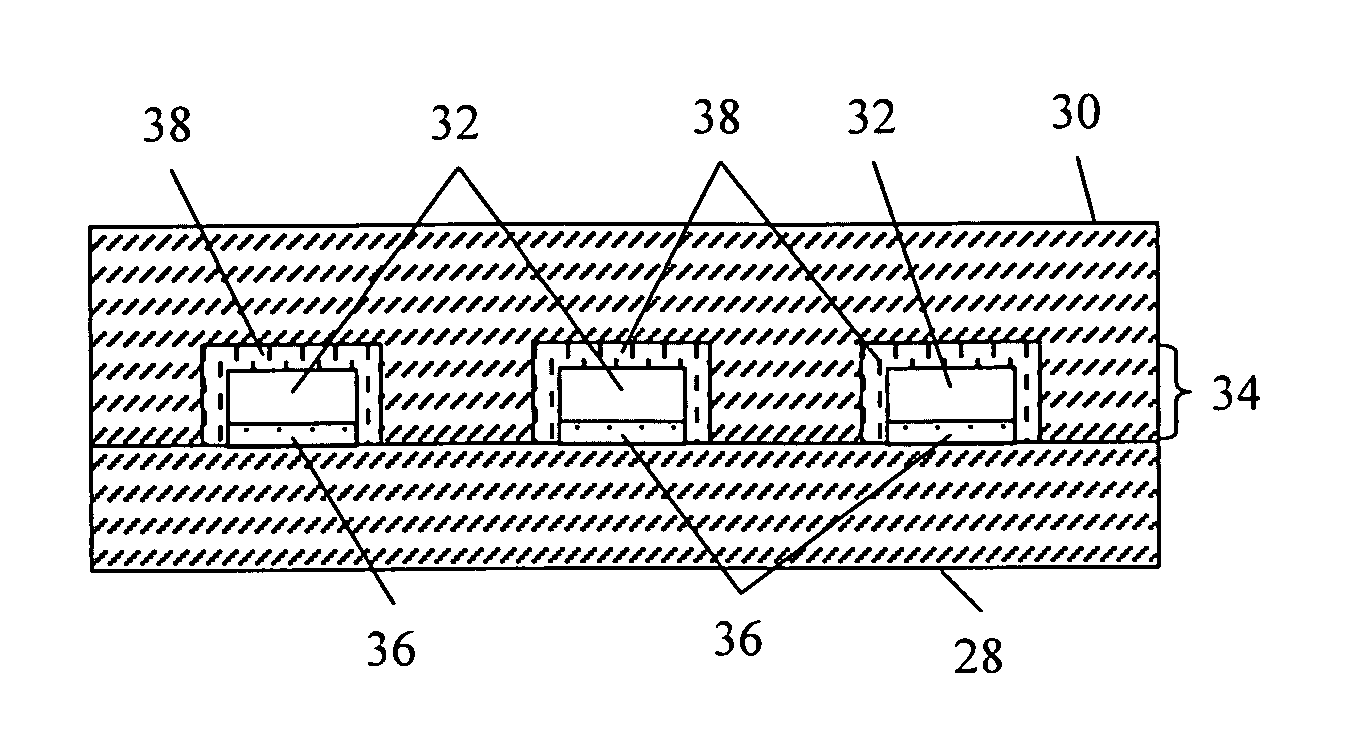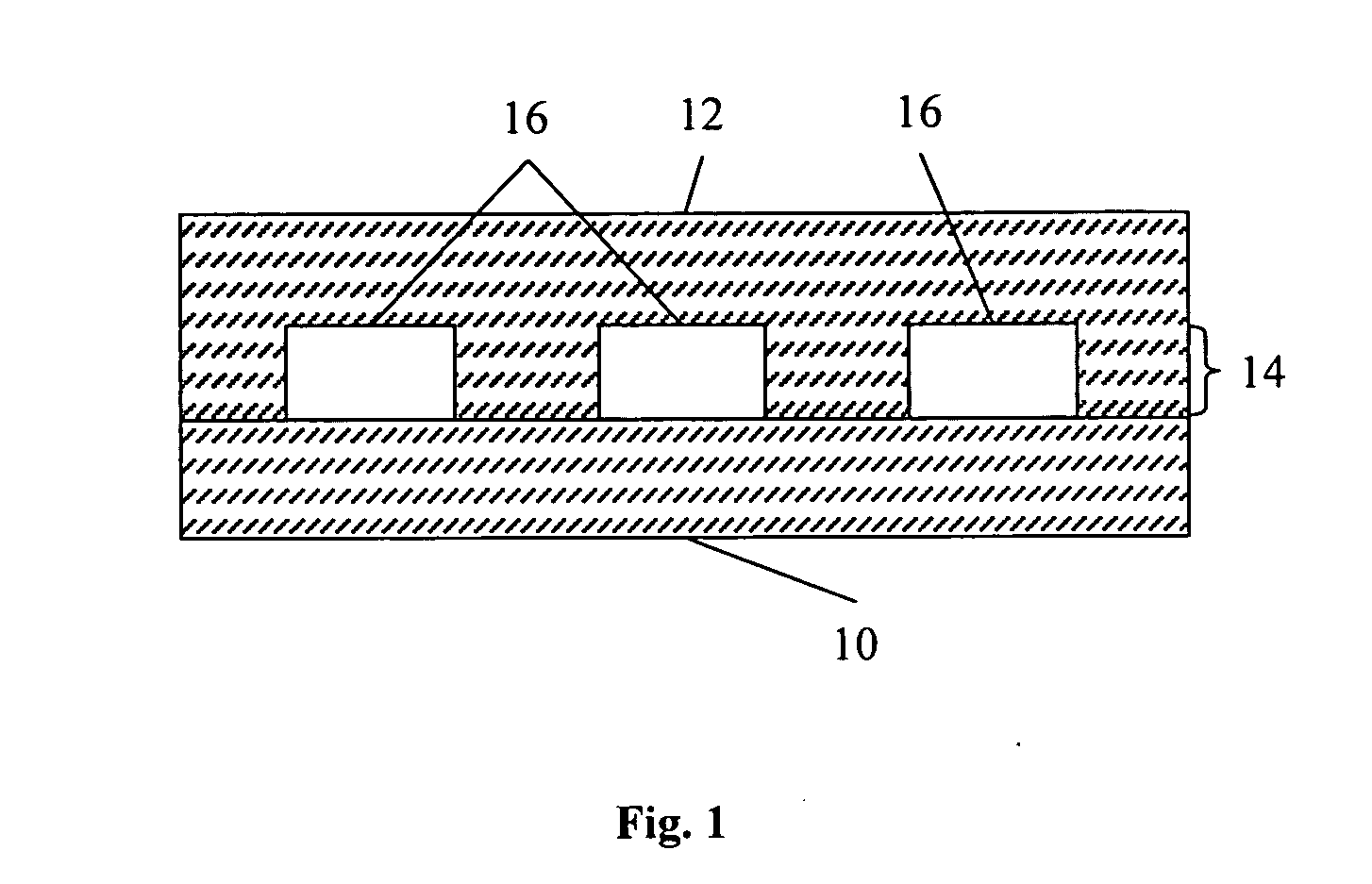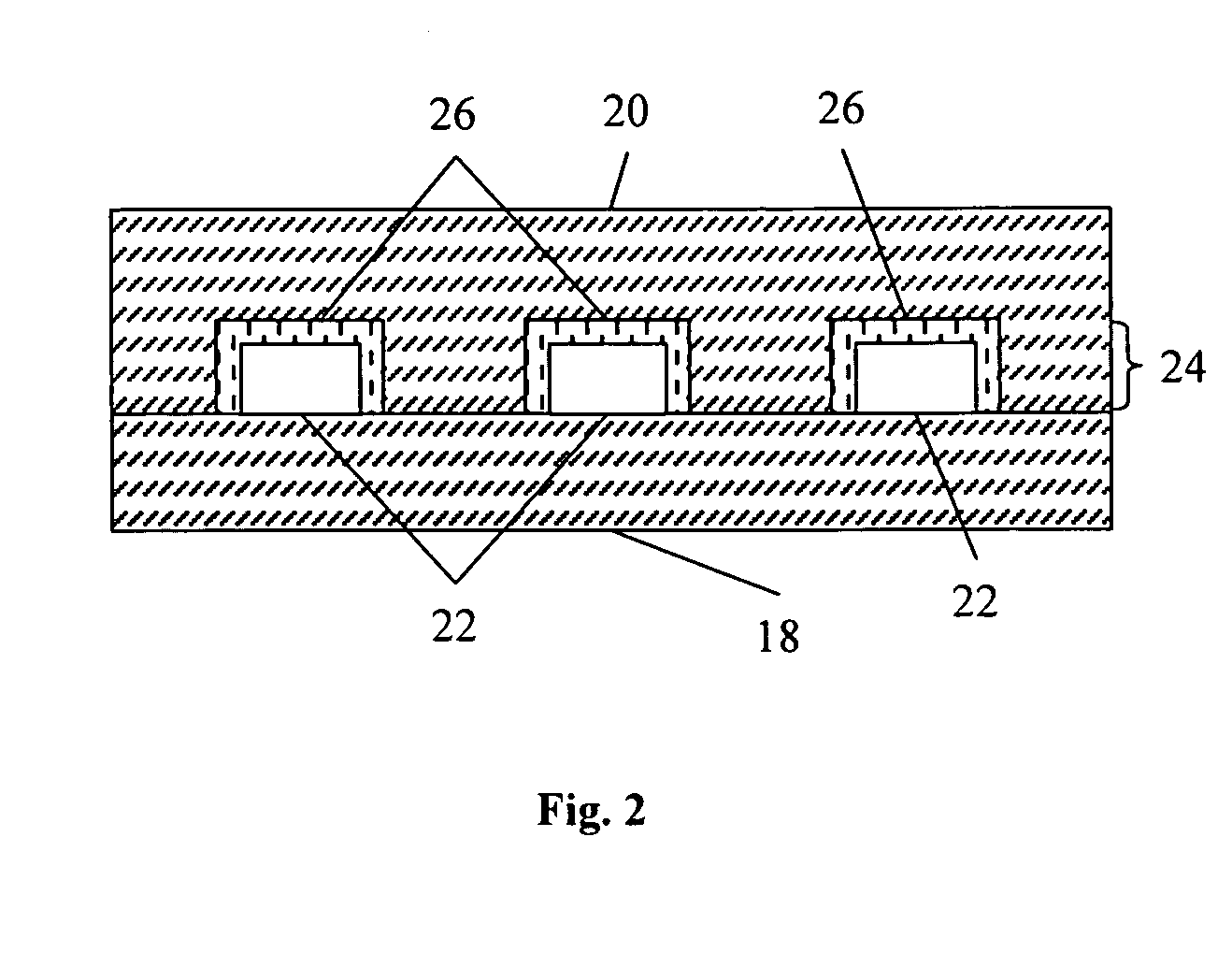Optical article
a multi-aperture operation and optical technology, applied in the field of optical articles with optical multi-aperture operation, can solve the problems of reducing the conductivity and reflectivity affecting the radiation transmission efficiency of the buried layer, so as to reduce the alteration of the index of refraction of radiation transmission, improve radiation transmission, and eliminate or reduce the effect of reducing the alteration of the index of refraction
- Summary
- Abstract
- Description
- Claims
- Application Information
AI Technical Summary
Benefits of technology
Problems solved by technology
Method used
Image
Examples
example 1
Multi-aperture Zinc Sulfide Articles with Titanium-Tungsten (Ti—W) Conductive Layer
[0089] Zinc sulfide was produced by the reaction of elemental zinc with hydrogen sulfide at a temperature of 675° C. and a furnace pressure of 35 torr. The furnace was heated resistively using graphite heating elements. A graphite retort was mounted at the bottom of the furnace containing zinc. The retort was heated to a temperature of 700° C. to generate zinc vapor pressures of 5 torr. Zinc vapors were carried to the deposition area using argon as a carrier gas. Hydrogen sulfide at 3 torr was mixed with the argon at 28 torr and the mixture was introduced into the deposition area through a central injector. The hydrogen sulfide and zinc flow rates in the reactor provided a molar ratio of hydrogen sulfide to zinc sulfide during the reaction of 0.6 to 1. Zinc sulfide was deposited on the four inside walls of an open rectangular box. The average deposition rate of zinc sulfide was 1 micron / minute. The i...
example 2
Multi-Aperture Zinc Sulfide Articles with Tantalum (Ta) Conductive Layer
[0094] Water clear zinc sulfide substrates are prepared according to the method of Example 1 including the hipping process. A photoresist pattern is applied according to Example 1. Tantulum metal is deposited in the channels by sputtering using a conventional method such that the tantalum layer has a thickness of 20,000 Å. The photoresist remaining on the water clear zinc sulfide substrates is stripped using acetone. The photoresist with any deposited materials is lifted off the water clear zinc sulfide bases.
[0095] A zinc sulfide top coat is deposited on each zinc sulfide substrate base with the tantalum conductive grid using a CVD method as described in Example 1. After deposition of the zinc sulfide top layer, the articles are machined, lapped and polished to a scratch / dig ratio of 80 / 50. No anti-reflection coating is applied to any of the articles. The zinc sulfide articles are measured for transmission an...
example 3
Multi-Aperture Zinc Sulfide Articles with Molybdenum (Mo) Conductive Layer
[0096] Water clear zinc sulfide substrates are prepared according to the method of Example 1. A photoresist pattern is applied according to Example 1.
[0097] Titanium metal having a thickness of 300 Å is deposited in the channels using a conventional sputtering deposition method. After the deposition of the titanium layer, a layer of titanium dioxide having a thickness of 500 Å is deposited on the titanium layer by a conventional e-beam physical vapor deposition method. Molybdenum having a thickness of 10,000 Å is deposited on the titanium dioxide layer by a conventional sputtering deposition technique. The photoresist remaining on the water clear zinc sulfide is stripped using acetone. The photoresist with any deposited materials is lifted off the water clear zinc sulfide bases. In order to passivate and protect the exposed Ti / TiO2 / Mo metal during the subsequent overcoat deposition of zinc sulfide, the artic...
PUM
 Login to View More
Login to View More Abstract
Description
Claims
Application Information
 Login to View More
Login to View More - R&D
- Intellectual Property
- Life Sciences
- Materials
- Tech Scout
- Unparalleled Data Quality
- Higher Quality Content
- 60% Fewer Hallucinations
Browse by: Latest US Patents, China's latest patents, Technical Efficacy Thesaurus, Application Domain, Technology Topic, Popular Technical Reports.
© 2025 PatSnap. All rights reserved.Legal|Privacy policy|Modern Slavery Act Transparency Statement|Sitemap|About US| Contact US: help@patsnap.com



